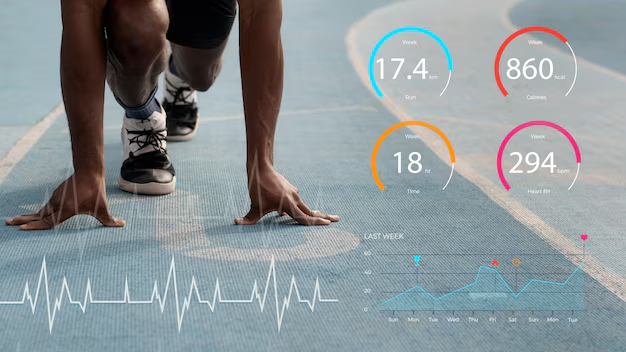Judgments in sports now require more than intuitive decisions from years past. Teams use available data to shape their training practices, operational planning, and fan relationship management. Analytics generates data that businesses cannot access through other means to support operations, such as ticket sales and player performance. The analysis of information produces significant effects on multiple elements of sports worldwide.
1. Player Performance: The Science Behind Success
Envision yourself becoming the first individual who crosses the finish mark. That’s visualization. Competitive athletes who participate at the top levels use visualization as a constant practice for mental preparation before competition. The brain networks react in the same way to visual game planning as they do during real-world execution.
Athletes teach their minds to develop useful mental reactions through vision techniques, which eventually transform into natural behavioral patterns. Competitive readiness triggers the body along with the mind to perform exactly how training has taught them at competition time. From the beginning of each race, Lindsey Vonn repeatedly visualized the complete route that she needed to run. Her mental visualization provided her with the confidence required to achieve victory every time she competed.
Competitive athletes need to perform mental visualization by designing images that show both final victories and strategies for dealing with competition challenges, such as facing competitors and their moves as well as unexpected difficulties.
2. Strategy and Game Planning: Gaining a Competitive Edge
Game-time plans depend on data as much as training succeeds with it. The analysis tools let coaches investigate their opponents’ performance patterns. The performance of zone defense by opponents allows basketball teams to prioritize such defensive strategies in their game plans.
NFL teams use analytical methods to predict player strategic decisions during games. The knowledge defense teams gain from this realization makes their prediction abilities superior for upcoming offensive actions. To make use of optimal game combinations baseball teams analyze pitching statistics together with batting performance.
3. Injury Prevention: Playing It Smart
The occurrence of sports-related injuries can end professional careers, and at the same time, it costs teams substantial financial losses. Organisations utilize workload and recovery monitoring analytics to maintain control over injury risks in their operations.
- Electronic devices that athletes wear monitor their muscle tension together with signs of physical fatigue.
- When activity levels reach excessive numbers, trainers modify training intensity or rest intervals according to the data.
Seamlessly identifying such indications before major injuries happen allows teams to minimize serious harm and extend athletes’ training seasons.
4. Fan Engagement: Creating a Personalized Experience
A team needs active supporters to develop their potential since viewers do not suffice for ongoing success. Understanding supporter preferences allows clubs to boost ticket sales together with marketing effectiveness. Data analytics plays a central role in this context because it tracks fan interactions by monitoring their behavior across social media platforms together with ticket sales information as well as survey results.
- The evaluation of intense social media engagement allows teams to author next-generation social media content.
- Teams generate specialized marketing efforts for distinct fan demographics through analyzing their buying patterns of tickets.
- Fan preference information drives decisions about stadium improvement elements including food choices and entertainment programming.
Team efforts to strengthen bonds with fans result in stronger fan loyalty and better attendance.
5. Revenue Optimization: Data Drives Dollars
Distractions can derail performance. Competitive athletes train themselves to focus on their primary athletic activities despite ignoring both external diversions and personal strains which would otherwise affect them.
- Deep breathing functions as an athletic pressure management technique used by competitors for maintaining their mental calmness during performance.
- Sports professionals focus on instant team plays because they avoid considering team outcomes in advance.
Through meditation LeBron James maintains peak alertness as a professional basketball player during games as well as his daily interactions.
6. Emotional Control: Keeping Cool in High-Stakes Moments
Most professional athletes discover themselves exposed to the tough, aggressive conditions that define their environments. Performance breakdown will occur when emotional control fails to manage frustration along with fear and nerves.
- A person who practices focused breathing techniques cuts down the levels of adrenaline inside their system.
- Visualization of calm, successful scenarios
These emerging developments aim against sports data usage boundaries to help both talent discovery and fan engagement processes.
Conclusion
Sports analytics continues to replace every sporting element through the new analytics system, which has reformed all aspects of the sector. Teams use this platform to create better ways for supporters to engage reduce injuries, and improve player performance. However, data-driven strategies use field actions as well as offfield choices for both athletes and fans.
Interested in sports insights and trends? Discover expert sportsbook reviews to stay ahead in the game!



